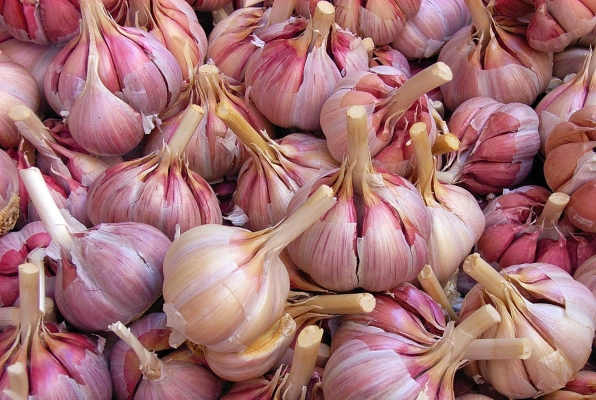
Are you in need of in-depth knowledge on onion and garlic production? If yes, we are a call away. Contact us for: Onion seedlings, Garlic seedlings, Germinated garlic cloves, Farm planning services, Soil testing, training on onion and garlic growing, Drip irrigation installation and maintenance, Agronomic support, Onion and Garlic value pack and Farm management. For free consultation, placing orders or booking a visit with an agronomist, please contact us via Call or what’s app +254703982228, Email: Info@oniondoctor.co.ke. You can also check out our social media handles for daily updates on TikTok: https://www.tiktok.com/@oniondoctorke?_t=ZM-8wmsTu0qumO&_r=1 Instagram: https://www.instagram.com/oniondoctorke?igsh=MTVoaHF3aWUydTJzaQ==Facebook:https://www.facebook.com/share/16SwgYn2dG/ Youtube:https://youtube.com/@oniondoctorke?si=u5Jnd-r0qU9UDYqL and Twitter: https://x.com/OnionDoctorKe?t=FR3JXlS_oN1vjjUgAtfyzg&s=09
Garlic (Allium sativum) is usually grown outdoors for its edible bulbs and greens. However, with a bit of skill, garlic can be grown indoors in pots, which is a particularly good solution for urban growers who don’t have the space for a large outdoor garden.
If you need help on how to grow garlic indoors, we Onion Doctor are here to hold your hand, trainings and guidelines we offer for a smooth journey. Reach to us for more information at a very competitive price.
Where to Plant Garlic Indoors: Compared to many other vegetables, garlic is a compact grower, which makes it relatively easy to keep in containers. Garlic can be grown indoors in a simple terra-cotta pot at least 6 inches deep and filled with well-draining potting soil, as long as it has a drainage hole. Choose an indoor location that receives six to eight hours of bright light daily—garlic thrives with lots of sunlight. If bright light isn’t available, growing the garlic under a grow light is an option, but the plants won’t be as robust as those grown in natural light.
How and When to Plant Garlic Indoors: The best time to plant garlic indoors depends on whether you want to grow greens or bulbs. If you’re content growing only garlic greens, you can plant garlic cloves indoors anytime. However, if you want to grow plump and delicious garlic bulbs, aim to plant the garlic cloves early . Garlic cloves planted early in the year produce harvestable bulbs by the following season. If you want to grow garlic for greens, plant multiple cloves in a single pot, but make sure the cloves aren’t touching. In about 7 to 10 days, garlic greens will emerge, and you can snip them off to use in salads, stir-fries, and other dishes. Leaving about 1 inch of greens on the cloves encourages them to resprout, delivering a few harvests of greens before the cloves are exhausted.
follow these steps:
Chill the garlic. When grown outdoors in gardens, garlic is planted in hot season and enters a dormant state in cold season, which is necessary for bulb formation. When you grow garlic indoors, you need to replicate the cold temperatures of a the garden. Both soft-neck and hard-neck garlic cloves should be chilled for several weeks before planting. You can do this either by placing garlic cloves in your refrigerator or potting up the garlic and placing the pots outside for a few weeks when the temperatures are cool. This brief period of cold encourages garlic cloves to germinate and is an essential step for growing garlic bulbs indoors.
Separate the cloves. After chilling the garlic bulbs, gently break the garlic cloves apart with your fingers, keeping as much papery skin on the cloves as possible. As you work, inspect the cloves and discard any that look damaged, moldy, or soft.
Add soil. Next, fill the growing container with a standard, well-draining potting mix, adding enough mix to reach about 2 inches below the pot’s rim.
Place the cloves. Place the garlic cloves, pointed ends up, in the pot and press each clove about halfway into the potting mix. If you want to grow multiple garlic cloves in a single pot, space each clove at least 6 inches apart.
Pour in more soil. After planting the garlic, fill the pot with more potting mix so each garlic clove is covered with about 1/2 inch of soil. Gently firm the potting mix around the garlic and water the cloves.
Onion Doctor supports small holder farmers across Africa with quality and affordable Onion and Garlic seedlings, Onion seedlings, Farm planning services, Soil testing, Drip irrigation installation and maintenance, Agronomic support, Onion and Garlic value pack, Farm management, E-extension and on-farm training for farmers to optimize on yields and get maximum profits.











